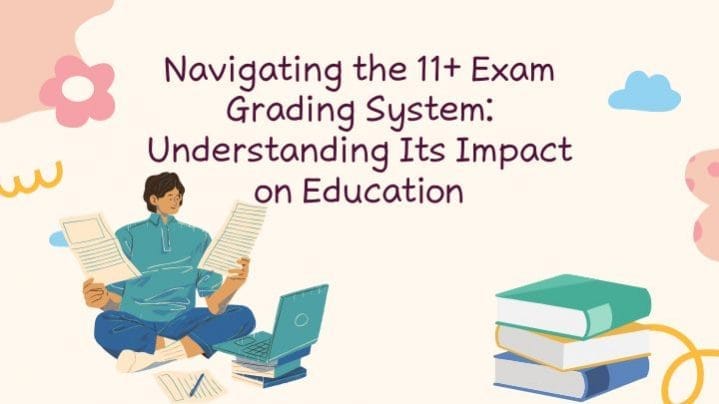
Navigating the 11+ Exam Grading System: Understanding Its Impact on Education
In the realm of education, few assessments hold as much significance and controversy as the 11+ exam. This standardized test, primarily administered in the United Kingdom, plays a pivotal role in determining students’ academic futures by influencing their secondary school placements. However, behind its seemingly straightforward purpose lies a complex grading system that warrants closer examination.
The Basics of the 11+ Exam
The 11+ exam, typically taken by students in their final year of primary school (age 10-11), serves as a means to assess their academic aptitude and suitability for different types of secondary education. Historically, the exam was used to determine admission to grammar schools, which offer a more academically rigorous curriculum. Today, its impact extends to selective admissions in various types of schools, including grammar, independent, and partially selective schools. Read How to clear the 11 plus exam
Understanding the Grading System
The grading system employed in the 11+ exam varies depending on the region and the examining body responsible for its administration. However, the core principles remain consistent across most jurisdictions:
- Multiple Choice or Written Exams: The 11+ exam typically consists of multiple-choice questions or written assessments in subjects such as mathematics, English, verbal reasoning, and non-verbal reasoning.
- Standardized Scores: Students’ performance on the exam is converted into standardized scores, which allow for comparison across different test components and cohorts of students.
- Pass Marks and Thresholds: Depending on the school or educational authority, there may be established pass marks or thresholds that students must achieve to be considered for admission. These thresholds often vary based on demand and available spaces in selective schools.
- Bandings or Categories: In some regions, students’ scores are categorized into bands or groups based on their performance relative to others. These bandings may determine the type of secondary school to which students are eligible for admission.
Criticisms and Controversies
Despite its widespread use, the 11+ exam and its grading system have faced significant criticism and scrutiny:
- Bias and Inequality: Critics argue that the exam perpetuates socio-economic inequality by favoring students from privileged backgrounds who have access to tutoring and resources to prepare for the test.
- Validity and Reliability: Questions have been raised about the validity and reliability of the exam in accurately assessing students’ academic potential and suitability for different types of secondary education.
- Psychological Impact: The high-stakes nature of the 11+ exam can place immense pressure on young students, leading to stress, anxiety, and negative psychological effects.
- Lack of Consistency: Variations in exam content, format, and grading criteria across different regions and examining bodies contribute to inconsistencies and inequalities in the assessment process.
Moving Forward: Towards Fairness and Equity
In response to these criticisms, efforts have been made to reform the 11+ exam and its grading system to promote fairness, equity, and inclusivity:
- Fair Access Policies: Some educational authorities have implemented fair access policies aimed at widening participation and reducing socio-economic disparities in selective admissions.
- Alternative Assessment Methods: Exploring alternative assessment methods, such as teacher recommendations, portfolios, or holistic admissions criteria, can provide a more comprehensive understanding of students’ abilities and potential.
- Tutoring and Support Programs: Initiatives to provide access to free or subsidized tutoring and support programs aim to level the playing field for students from disadvantaged backgrounds.
- Transparency and Accountability: Enhancing transparency and accountability in the 11+ exam process, including clearer communication of grading criteria and mechanisms for appeals, can help build trust and confidence in the system.
Conclusion
The 11+ exam and its grading system occupy a contentious space in the landscape of education, reflecting broader debates about meritocracy, equality of opportunity, and social mobility. While the exam serves as a mechanism for allocating scarce educational resources, its impact extends far beyond individual students to shape educational outcomes and social structures. By critically examining its grading system and addressing its shortcomings, we can work towards a more equitable and inclusive education system that serves the needs of all learners, regardless of their background or circumstances. Let’s connect for 11 plus exam preparation
